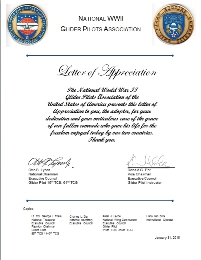| ||||||||||||||||||||||||||||||||||||||||||||||||||||||||||||||||||||||||||||||||||||||||||||||||
Oscar T. Rains | Final Flight-- December 1st, 2015. b.1920 - d.2015 |
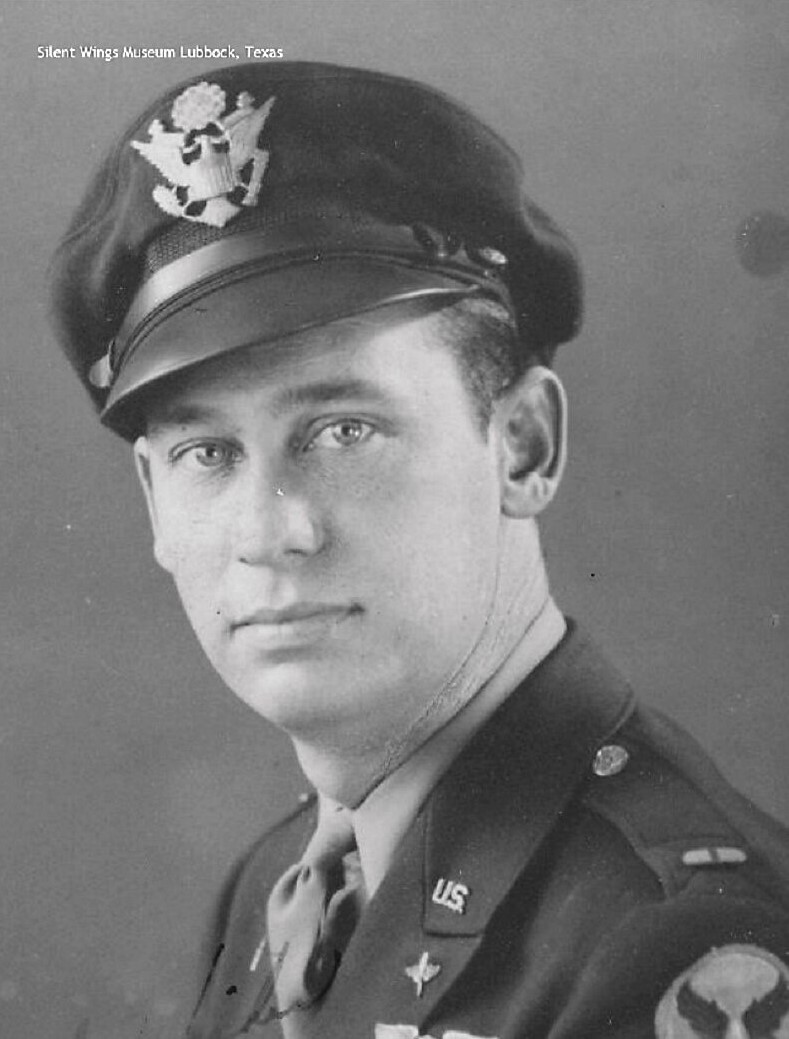 |
 Obituary: Oscar Theran Rains (affectionately referred to as “Joe”) passed away peacefully on December 1, 2015 at age 95. |
Final Flight:For years Oscar Rains was an active member and dedicated Deputy Wing Commander for Wing 1, Western U.S., in the National WWII Glider Pilots Association. 1943: Oscar “Joe” T. Rains graduated from advanced glider school at Air Field Dalhart, class of 43–2 on Jan. 25, 1943 with the rank of Flight Officer. He was assigned to the 71st Troop Carrier Squadron, 434th Troop Carrier Group stationed at Air Field Aldermaston, England. He was involved in four major operations of the war in the European Theater: Normandy – Chicago Mission. On June 6th 1944, 1st Lt. William Snyder and F/O Oscar Rains piloted a CG–4A glider, Chalk no 13, in the first Serial of the 52 Wing. They made a 4:00 AM landing. Their Landing Zone was E on the Cotentin Peninsula, Northwest of St Mère–Église. Their load was a component of the 101st Airborne. Southern France – The 434th Troop Carrier Group was not slated for the Southern France operation. However, General Beach sent men in support of this operation. It seems, based on our database that Joe was involved in this support. As mentioned in the 434th Group history: “This was occasioned by the return, from Italy, of Colonel Beach and the staff members who had accompanied him there for the airborne attack on Southern France. This invasion took place on August 15th with Troop carrier Groups from 50th, 51st and 53rd Wings participation. Small enemy opposition was encountered, only one plane receiving a thirty caliber bullet hole. There was some confusion in landing and several gliders casualties resulted from hitting poles in vineyards but as a whole the operation was most successful.” Holland – F/O Rains flew on September 18th Market Garden, Serial A–47, Again his load was the 101st Airborne, either a component of the 327th GIR or 401st GIR, and his destination was LZ–W. Varsity – On February 20th the 434th moved to the continent at Air Field A–80; Mourmelon–le–Grand, France, just 30 km southeast of Reims. For the Varsity operation the 434th was only committed to paratrooper drops to Germany, LZ-W and LZ-X. The glider pilots were sent to the other groups who were making glider landings. According to the Interrogation report (which is given by the glider pilots to the intelligence officer upon returning to their air field) F/O Rains was sent on detached service to the 436th TCG, 79th TCS. The 436th was located near Melun at Vilaroche, advanced landing ground A–55, 180 km southwest of A–80. Lt. Richard S. Batlan and F/O Rains piloted Chalk 132 and their load was a component of the 17th Airborne. The 17th Airborne loaded and secured a jeep into glider 132 on the morning of March 24th. Joe had already delivered gliders under combat to Landng Zones in Normandy and Holland with the chances of being killed by the Wehrmacht. However, it was not the Germans army but a jeep that threatened the lives of the men in glider 132. At approximately 0910 the formation was already on course, we hit some rough air causing the chocks underneath the jeep springs to jar loose. We continued on, calling to the airborne in the jeep to attempt to tie the load more securely, but they were unable to leave their seats as the jeep was starting to bounce severely so that their helmets were hitting the main bulkhead. When some more rough air was encountered the load started to shift forward against the pilots and co-pilots seats causing the nose latch catches to springs. As we had an hour and forty minutes more to the LZ. I thought it best to cast loose—before doing so I asked the opinion of my co–pilot and airborne crew, they agreed. So picking a field in the area we released, approaching a plowed field on our left—180 degree approach—as we touched down the load came forward, split the pilots seat but no further damage was done to the glider. The field is located outside the town of Dampleaux (Villers Cotterets area) about 45 miles northeast of Melun. We left one Airborne Sergeant in charge of the glider and returned as best we could to this base. [signed:] Richard S. BatlonJoe will be missed by the members of the Association but his loss will be felt most deeply by his fellow veterans, his band of brothers. | |
November 2015
In November we gave thanks to our current (living)
Association WWII veteran Members
[Mouseover to stop scroll][Mouseover to stop scroll]
* * *
November 11 Veterans Day | ||
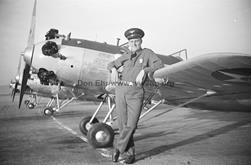 Don graduated from Advanced Glider Training on July 20th 1943 and was commissioned as a 2nd Lt. He was assigned as a glider pilot instructor at South Plains Army Air Field until February 1945 when he was transferred to Laurinburg–Maxton Army Airfield in North Carolina, to receive tactical training for preparation for combat duty overseas. Don was promoted to 1st Lt. in April 1945. By the end of the War Don had 840 plus flight hours with many of those hours logged in a C–47. He has also been the pilot of a glider snatch by a C–47. Don retired from the Air Force Reserves. | 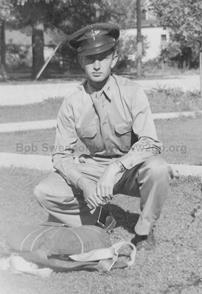 Flight Officer Robert Swenson graduated from glider training at South Plains Army Airfield in Lubbock, Texas in July of 1944 and was then transferred to Laurinburg–Maxton Army Airfield in North Carolina, where he received tactical training for preparation for combat duty overseas. He was assigned to the 72nd Troop Carrier Squadron of the 434th Troop Carrier Group in November. In early March Bob was transferred to the 435thTCG for Operation Varsity where he was in volved in the Battle of Burp Gun Corner. During April through the end of May he flew as an auxiliary Navigator in the resupplies missions on C–47s. Bob retired from the Air Force Reserves | |
October 2015
Arthur Randall Collins | Final Flight-- October 18, 2015.
b.1920 - d.2015
|
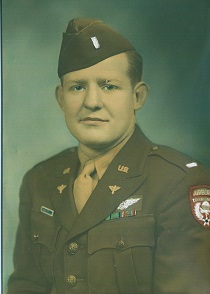
Arthur Collins (72/434) |
 Final Flight: Arthur Collins graduated from Advanced Glider Training at Lubbock Tx. South Plains Army Air Field, on 15 March 1943, class 43-5 |
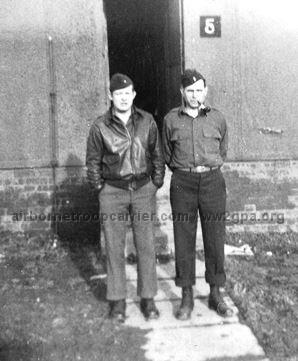
Arthur Collins (72/434) and Charles H. Inglish (72/434) |
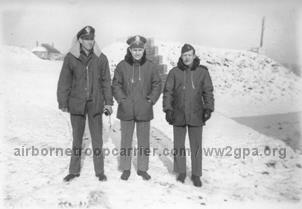
Louis P. Hodge (71/434), Charles H. Inglish (72/434) and Arthur Collins (72/434) |
Normandy-On 6 June 1944, F/O Collins was piloting Glider chalk #3 in Mission Keokuk, Dropzone E, Serial 29. Their load was elements of the 101st Airborne. His co-pilot was F/O Richard S. Myers who was killed by a sniper during this mission. Their entire Serial took in 157 men from Signal, Medical and staff personnel as well as 40 vehicles, 6 guns, and 19 tons of equipment and supplies. Holland-Market- On Sept. 17th Arthur flew his glider, serial A-4 into LZ A1. His glider was carrying components of the 101st Airborne Division, 501 PIR plus Co A 326th Eng. They lost four glider pilots on this mission. | |
Then came the invasion of Germany:
Arthur will be missed by the members of the Association but his loss will be felt most deeply by his fellow veterans, his band of brothers. | |
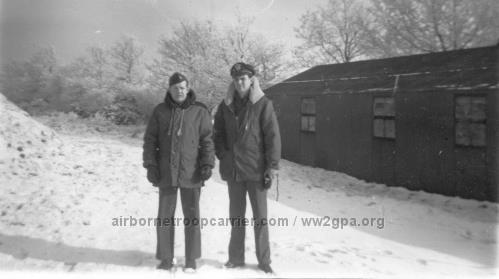
Arthur Collins (72/434) and Charles H. Inglish (72/434) | |
September 2015
Kenneth G. Turner | Final Flight-- September 19, 2015.
b.1923 - d.2015
|
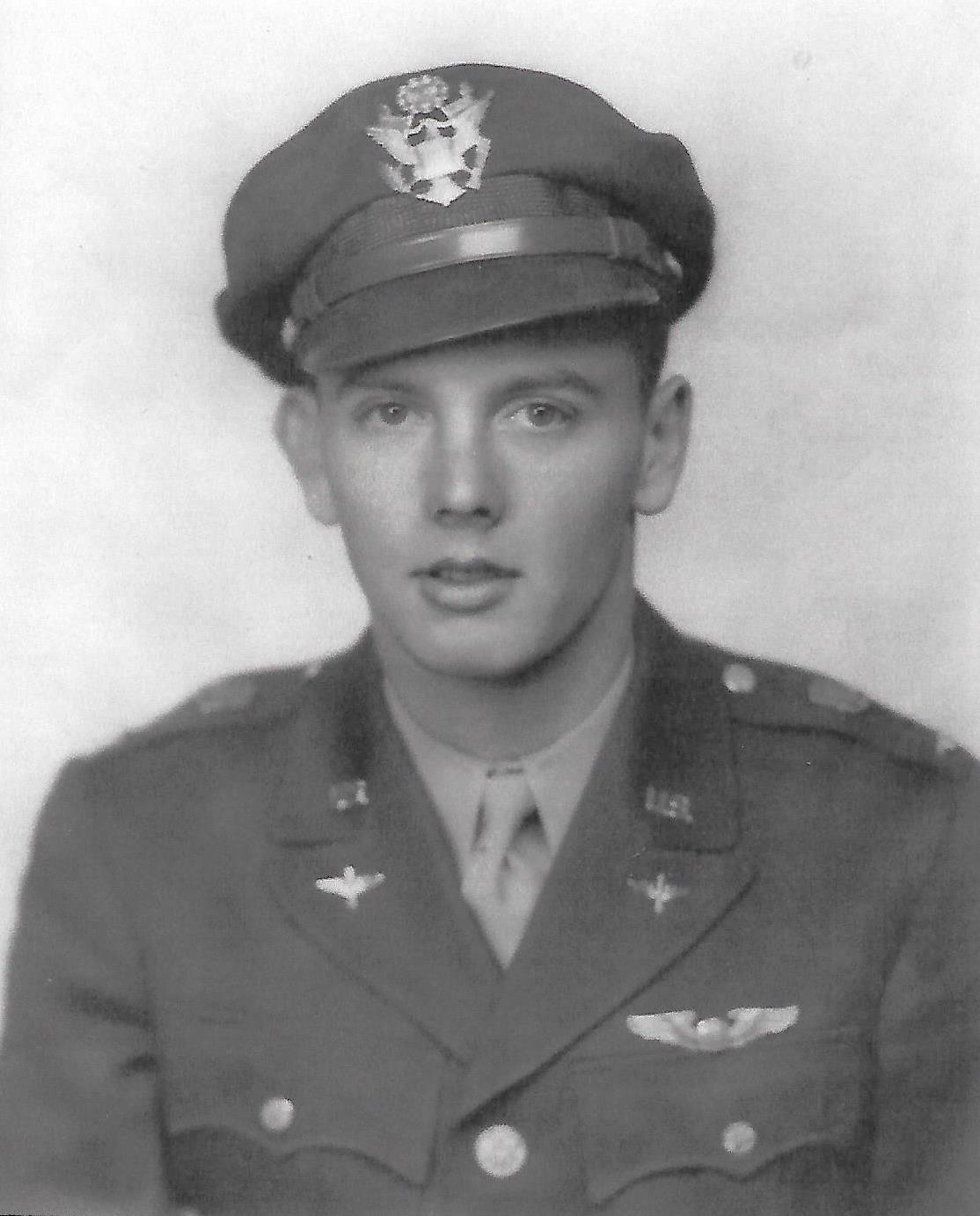
Kenneth G. Turner (87/438) 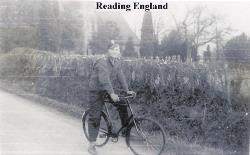
Ken on a bicycle in Reading. Reading is 18 miles east of Greenham Common by the A-4 road. 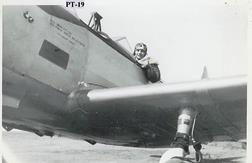
“First time flying was in a Fairchild PT 19A powered by a 175 Ranger engine. Soloed April 5, 1945after 6-7 hours of dual training. Primary completed May 24, 1943, 65 hours flying time.” |
 Final Flight: After graduating from High school Kenneth Turner began contributing to the war effort. He went to an aircraft sheet metal school in Fairbury, Nebraska and went to work in the Glenn L. Marin Aircraft Co. plant in Baltimore. After Pearl Harbor, when the US entered the war, Ken enlisted in the Army Air Corp. He completed primary flight school on May 24th 1943. |
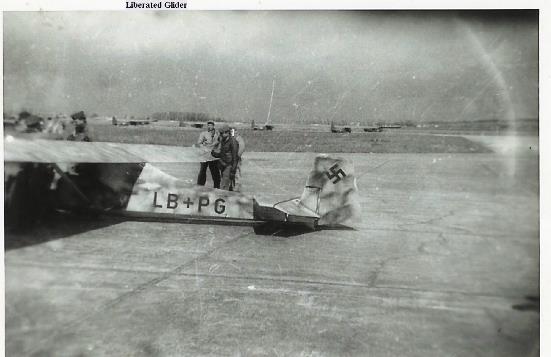
Kenneth's Crew on a resupply after the war ended found a disassembled German primary glider in a shed. “Of course it was loaded on our C-47 and flown back to Amiens. Some of the glider pilots, put it back together, got a tow rope, tied it to a L-4 and made a few flights around our field, until some General put a stop to their flying.” Ken will be missed by the members of the Association but his loss will be felt most deeply by his fellow veterans, his band of brothers. | |
* * *
Lewis H. Buzzell Jr. | Final Flight-- Sept 13, 2015.
b.1920 - d.2015
|
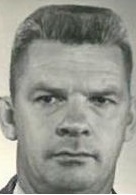 |
 Final Flight: Capt Lewis H. Buzzell, Jr. (Ret. USAF) joined the Army Air Corps in February 1941 when the glider pilot program was just getting off the ground. On Graduated from the South Plains Army Airfield, Advanced Glider Training School
on 12/23/1942, class 42-U2, Lubbock, TX. He was assigned to the 46th Squadron, 317th Troop Carrier Group. |
|
Lewis made the USAF a career and retired as a Captain. He was a long time member of our Glider Pilots Association. Lewis will be missed by the members of the Association but his loss will be felt most deeply by his fellow veterans, his band of brothers. | |
August 2015
Claude "Chuck" A. Berry and James flew a glider into the Varsity Operation the invasion of Germany 24 March 1945. This was the largest air lift in history and both Chuck and James were on double tow [ one C-47 towing two gliders ].
After returning to Chateaudun France from Varsity (Wesel Germany), Chuck and James Aase were sent on a flight to Paris to be interviewed and recorded on a 78 record. Aase was his foxhole mate about 100 yards from Burp-Gun Corner. Chuck said the interview only lasted 5-10 mins but they were both recorded on the record and describe what happened and what they heard while in combat.
Once the record was made, it was cleared for publication (on the label). It was then mailed to the nearest radio station to where the interviewee lived (San Antonio) in Chuck’s case and it was played for the hometown folks to hear the voices of their boys. After it had served its purpose for local news, it was given to the guys on the record and Chuck has had it ever since.
The recording is a little scratchy but understandable from a 78 record.
Chuck and others who flew the Varsity Operation will be at the glider pilots reunion this October for information visit ww2gp.org/reunion.php
and The National WWII Glider Pilots Association, Inc.
Video Compiled by Patricia Overman
July 2015
Pete Joseph Lecce | Final Flight-- July 24, 2015.
b.1926 - d.2015
|
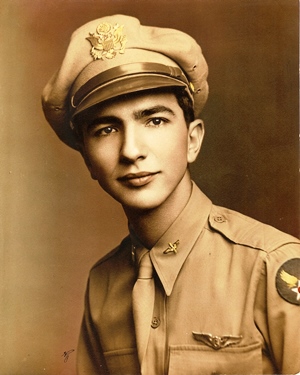 |
 Final Flight: Peter Joseph Lecce, 93, of Collinsville, Ill., born Aug. 23, 1921.
Pete, National Wing Commander of the National World War II Glider Pilots Association, passed away Friday, July 24, 2015. Pete was an outgoing individual and a great asset to the Association. In 2013 he did not hesitate to fly in a P-51 when Cowden Ward brought his plane to the reunion in San Antonio.
Pete, T-128225, graduated with the rank of Flight Officer from advanced glider school, Class 44-7, on June 15, 1944 in Lubbock Texas. |
|
In the winter of 1945 Pete flew gliders and co-piloted C-47s to help ferry gliders in the unit?s move to Orleans, France. In the spring of 1945 Pete was sent to Amiens France and then sent back to the United States as the U.S. was preparing to transfer pilots to the Pacific Theater of Operations. Pete will be missed by the members of the Association but his loss will be felt most deeply by his fellow veterans, his band of brothers. | |
June 2015
Floyed Piper | Final Flight-- June 29, 2015.
b.1921 - d.2015
|
| Floyd Piper was a civilian instructor at the “dead stick” school in Spencer, IA and a long time affiliate member of the Association. Taken from his obituary: "Floyd always enjoyed flying. Taking his first flight when he was 10 years old, he was a licensed pilot for 60 years logging over 6,000 hours. He began instructing prior to WWII and was a flight instructor for over 30 years. In 1941 he became an instructor for the Army Air Corp Glider School and the Primary Flying School. He was a Military Pilot flying the C-54 and other aircraft in the Pacific Theater. He flew many trips to Iwo Jima, landing on metal strips on the beach to evacuate wounded back to the hospital in Guam. Many trips were made to Japan to take in supplies and personnel before the peace was signed." Dick was a member of our National World War II Glider Pilot Association. He will be missed by all but especially his fellow veterans, his band of brothers. | |
* * *
Richard J. Beck | Final Flight-- June 22, 2015.
b.1922 - d.2015
|
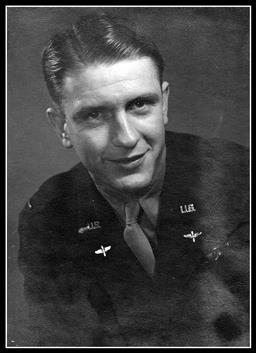 |  Richard entered the U.S. Army on August 30, 1943. He went into the Army Air Corps training program and graduated from advanced flying school in the late summer of 1944. Richard left the U.S. on October 28th at the age of 22 and arrived in England on November 10th at the replacement depot station. Here he was assigned to his squadron and a few days later arrived at Station 290 Langar Air Field. This was the home of the 301st Troop Carrier Squadron, 441st troop Carrier Group, under the 50th Troop Carrier Wing, under the 9th Air Force and was now Richard’s new squadron with the assigned MOS of 5021, twin engine pilot. |
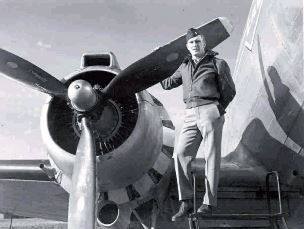 | 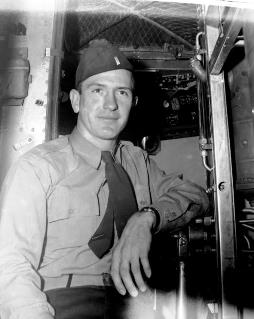 |
|
Their C-47 missions involved resupplying the front lines with equipment, rations, medical supplies, mail and sometimes returning with wounded soldiers.
While not flying to the front lines they were training, and flying equipment around England. | |
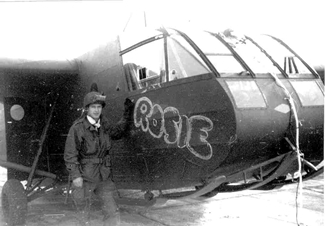 |
March 24th 1945 was D-Day for the invasion of Germany, code named Varsity. Pilot Lt. Kenneth Tudor and co-plot Lt. Richard Beck were assigned glider #2 (tail number 45-6489) Serial A-18 and were flying in elements of Battery A of the 155th Anti-Aircraft Artillery Battalion. Their load was a 75 mm Howitzer gun and a few, no more than seven, infantry men of Battery A. Their destination was Landing Zone N north of Wesel, Germany. They landed late morning and were greeted by flack and small arms fire. After the LZ was under control they unloaded and organized into a defensive perimeter behind the 17th Airborne’s position. |
|
During the night they encounter German gun fire and fired upon a group that did not answer appropriately to the call signs. | |
April 2015
Major Richard “Dick” Mudrow | Final Flight-- April 18, 2015.
b.1921 - d.2015
|
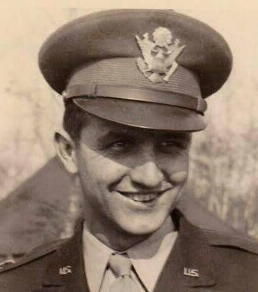 |
Dick was born on June 12, 1921, in Beatrice NE. He married on September 4, 1943, while stationed at Knobnoster MO, where he was stationed. Soon after that, his unit made the trip to Europe. Dick was a twin engine pilot with the 100th Troop Carrier Squadron, one of the four Squadrons of the 441st Troop Carrier Group. With that outfit he participated in all major airborne operations in Europe. |
|
NORMANDY - On D-day, June 6, 1944, he piloted C-47# 42-92918, chalk number 43 on Mission Albany, Serial 14, to DZ-D. In his aircraft were 17 paratroopers of the 501st Parachute Infantry Regiment, 101st Airborne Division. On June 7th he flew in the Hackensack glider mission (Serial 37) piloting C-47 # 42-101024, chalk number 23. He towed a glider with 82nd Airborne to LZ-W.
| |
* * *
Lt. Clifford Underwood | Final Flight-- April 7, 2015.
b.1926 - d.2015
|
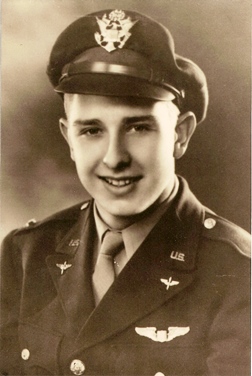 |
 At 0500 hours on March 24, 1945, 2nd Lt Clifford Underwood was aroused from a restless sleep. He made his way to the mess tent and was surprised to find waiting for him a steak and egg breakfast. At 0800 hours, Clifford, along with pilot 2nd Lt. James D. Hammett, climbed into the cockpit of their CG-4A glider. The glider was loaded with Troopers from Company M, 3rd Battalion of the 194 Glider Infantry Regiment. At 0815 hours they lifted off the runway of Advance Landing Ground A-55 at Melun/Villaroache, France, and joined the other seventy two gliders and thirty six C-47 tugs of the 436th Troop Carrier Group heading to Landing Zone S, northwest of Wesel Germany. |
|
Though the skies were clear in the early morning, promising a sunny day, it would not be a walk in the park. 10,000 German
infantry were waiting for them in LZ-S. For the first time in the war the landing zones would not be secured on their arrival. German 88mm Anti-Aircraft
guns were waiting to be lowered on the gliders as they landed.
This was the first time in the European Theater of Operation (ETO) that double-tow would be used in combat making the two and a half hour flight difficult with all the prop-wash
caused by the 36 C-47s flying in formation in their serial. In the Interrogation Check Sheet written upon return of the pilots, Lt Hammett commented, “Lt.
Underwood flew very good on tow.”
After cutting loose over LZ-S Clifford’s glider received light and heavy flak causing a 10” hole in the right side of the glider as they were landing.
ortunately none of the “glider riders”, were hit. They then received rifle and 20mm small arms fire after landing but they
“landed without damage to glider or crew.” Due to heavy enemy activity they were ordered to stay with the airborne and dig in for the night.
They remained with the airborne until relieved the next day.
| |
|
| |
March 2015
Simon Peter Vistuba | Final Flight-- March 10, 2015.
b.1915 - d.2015
|
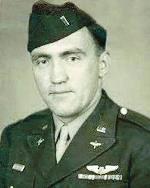 |
 Simon Vistuba was with the 78th Troop Carrier Squadron of the 435th Troop Carrier Group. He arrived in England in the Spring of 1944 and was stationed at Welford Park until late February when his Group moved to the continent and was then stationed at Bretigny-sur-Orge France. While in England Simon flew his first combat mission in the most significant operation of WWII, the Normandy invasion. |
|
The glider
mission was code named “Elmira” “Elmira” was a glider mission for the landing of airborne troops of the 82nd Airborne
Division in the southeastern part of the Cotentin Peninsula at a point known as GLZ ‘W’ located two miles southeast of Ste Marie Eglise (358930).
Simon’s glider was in the second echelon, second serial of the air armada. He flew the large British Horsa Glider. Once on the ground he had to make it
back to a point for pickup back to Welford Park. Out of glider pilots nine of the pilots were killed during this operation. Simon received the Air
Medal which is equal the to the Army's Bronze Star. He had‘G’uts. Obituary: Mr. Simon Peter Vistuba, who reached the milestone age of 100 in November, passed away on Tuesday, March 10, 2015. Mr. Vistuba served proudly in the U.S. Army Air Corp during WWII and retired from the U.S. Postal Service. He was dedicated not only to his family, but to his church. As a long time member of Holy Rosary Catholic Church, he was a Eucharistic Minister, Altar Server and helped to tender the gardens. Mr. Vistuba was preceded in death by his wife, Rose Ann Vistuba. He is survived by his children: James Vistuba, Elaine Jones and her husband Marvin, and Rita Purkhiser; grandchildren: Rachelle, Ryan, Chase and Bryan | |
February 2015
William S. Fisch | Final Flight-- February 19, 2015.
b.1921 - d.2015
|
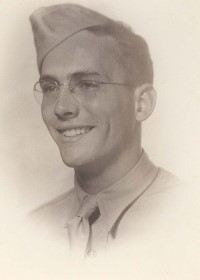 It was never the pilot’s C-47 but rather on loan to the pilot by the Crew Chief, provided they brought it back in one piece. |
March 8th, Message from the family: |
The Tech Sergeant/Crew Chief never talked about his service experiences, except for the occasional sentence or two his sons could induce with persistence.
Fortunately, the four children were able to understand the mighty influence of the WWII experience through our mom. She is from Slovenia and carried a Yugoslavian
Diplomatic passport, age 17 when the Normandy invasion took place. In exile with her parents and 5 younger siblings, they lived, or more correctly, were stranded
in Dreux, FR in the middle of WWII. | 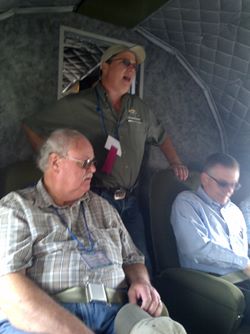 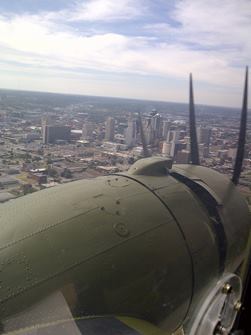
|
* * *
Lt. Edward W. Snyder | Final Flight-- February 17, 2015.
b.1917 - d.2015
|
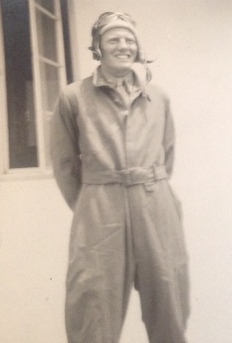 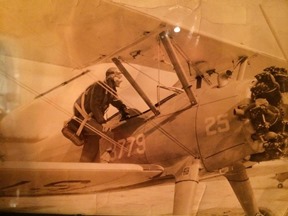 |

Edward W. Snyder graduated from Advanced Glider Training on January 7, 1943 at Dalhart, TX as a second lieutenant. He was sent to the European Theater of Operation (ETO) and was
assigned to the 44th Squadron of the 316th Troop Carrier Group. Edward Flew a glider in two combat missions: For these combat missions Edward Received an Air Medal and first Bronze Oak Leaf Cluster (2nd Air Medal) and the Orange Lanyard. Edward stayed in the military and retired as a Lt. Col. Edward was a loyal member of the Association. He will be missed but especially by his fellow veterans, his band of brothers. |
* * *
The Troop Carrier/Tactical Airlift Association
|
January 2015
Margraten Cemetery, Netherlands | ||
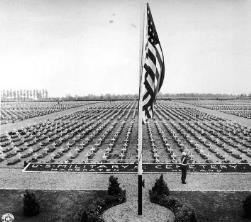 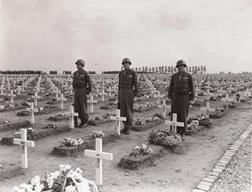 Photos taken at the Memorial Day Ceremony held at the Margraten U.S. Military Cemetery. Lt. Gen William H. Simpson, CG, 9th U.S. Army addressed the Netherland Civilians and the American soldiers and then placed a wreath on the grave of the unknown soldier. Later other general officers of his command also placed wreaths. Invocations were read by Chaplain Fegktgn (Catholic). Chaplain Shubow, (Jewish), and Chaplain Brady (Protestant). Holland 30 June 1945 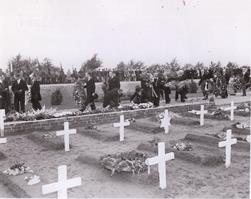 Dutch civilians place wreiths honoring American dead at Margaraten Millitary Cemetery, Maastrich, Holland 30 June 1945 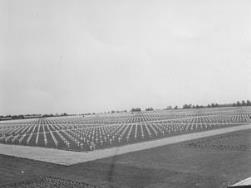 Shown is the Margraten Cemetery, Margraten, Holland, largest U.S. cemetery for World War II dead in Europe. there are 17,900 American war dead buried here. The memorial Day Ceremonies were attended by Her Majesty, Queen Wilhelmina, of the Netherlands; Maj. Gen. Edwin P. Parker, Inspector General, Eucom; His Excellency Doctor Fievez, Minister of War for the Netherlands Government; The Honorable Doctor Herman D. Baruch, United States Ambassador to the Netherlands; and other dignitaries, and over 60,000 Netherlands citizens. 30 May Credit - U..S. Army Signal Corps Photog - Lt. Lance & T/3 Hunt
Letter of Appreciation
The National World War II Glider Pilots Associaton of the United States of America presents this letter of appreciation to you, the adopter, for your dedication and your meticulous care of the grave of our fallen commrade who gave his life for the freedom enjoyed today by our two countires. Thank you. Signed by: Otto Lyons, National Chairman, Exectutive Council, Glider Pilot 15th TCS, 61st TCG and Donald G. Ehr, Vice Chairman, Executive Council, Glider Pilot Instructor | On January 29th Joseph Bisscheroux emailed the following information to the Association.
| |
|
As we learned that the 17th Airborne Division Association should stop their activities in 2007, we decided to organize a “Fare Well” Ceremony at Margraten on Varsity Day 2007. We invited all the adopters of troopers of the 17th and we worked out a fine Ceremony. Can you organize that a “Thank You” letter and a “Certificate of Appreciation” for the adopters of the AAF men will be made and that a copy will be sent to me? | ||
2018
2017
2016
2015
2014
2013
Christmas
P-51
BronzeStar


